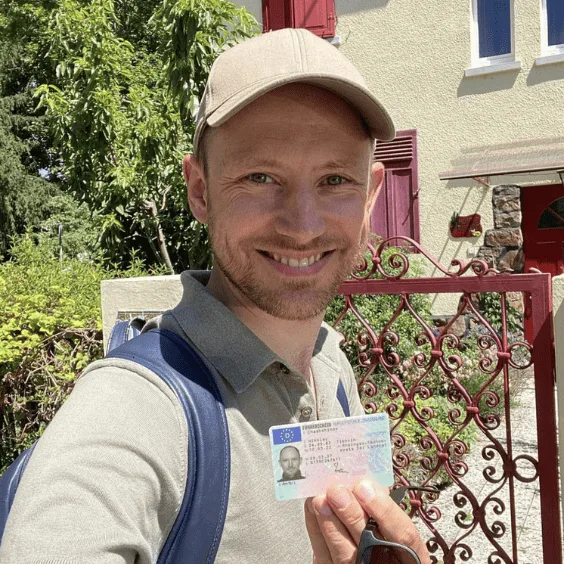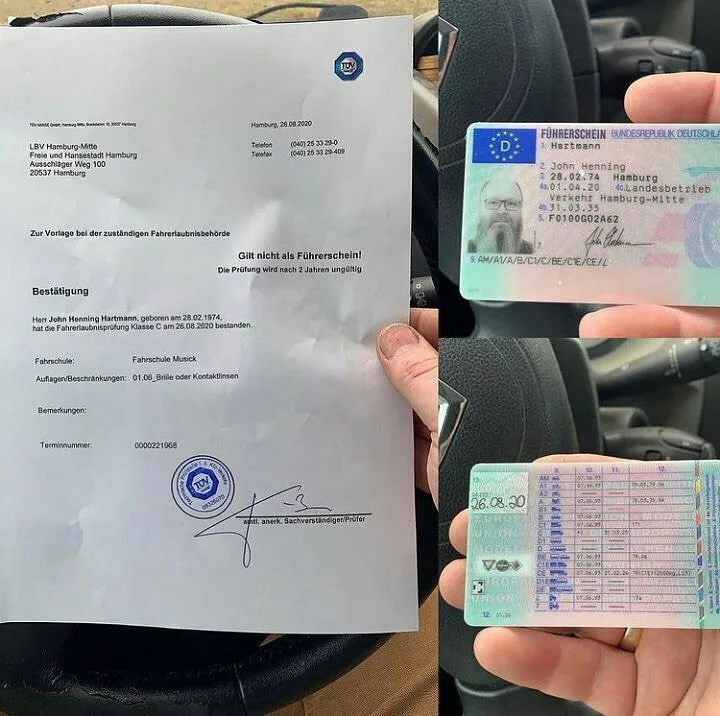11 Methods To Redesign Completely Your Buy Eu Driving License
페이지 정보
작성자 Cathern 작성일25-02-07 23:18 조회2회 댓글0건관련링크
본문
 Buy EU Driving License Experiences
Buy EU Driving License ExperiencesThe standard format EU driving license - a credit card-sized picture card with security features - is accepted throughout the EU. There are certain requirements you must meet in order to obtain one.
You must reside in the country in which you hold your driving license or go there regularly.
1. Passing the test
As long as you have a valid driver's licence from your home country, you are able to drive in the EU. However, if you plan to do a significant amount of driving overseas then it might be a good idea to obtain an International Driving Licence (IDL).
The IDL costs about $20 and is valid for one year. It is a translation of your driving license into several languages to ensure that road officials can read it. It also contains information on your health and any health conditions or diseases that could hinder your ability to safely drive. You must always bring your IDL when driving in a foreign location.
You must pass both the driving and writing test before you are able to take the European driver's exam. You'll also have to take an examination for medical reasons and prove that you're fit enough to drive. In some instances, you might be required to undergo a test for alcohol and drugs.
The pass rates for the driving tests vary widely. According to Lookers, a retailer of cars in the UK more than 50 million people have taken the test. The first-time pass rates remain at 49%. It's important to prepare for your test, Führerschein kaufen erfahrungen which includes practice on the test routes.
It is important to practice with an experienced driver in order to pass the test. Many companies offer driving classes and provide you with a vehicle to use for the test. It is essential to choose an instructor who is certified and has extensive experience in teaching new drivers.
Research the driving rules in the country you will be taking the test führerschein kaufen in deutschland. Some countries, such as France, have specific driving rules that you must know before taking the test. For instance, you must, wear a seatbelt when you are in the front seat of the car.
In addition to studying the laws of the road, you must be aware of the driving rules in the EU. You must, for instance, become familiar with the three-point turns and turning around a corner. You should also practice parking your car in a parking space and following the instructions on your sat-nav.
2. Driving in the country of another
It is important to know the local driving rules and regulations when driving in another country. Different countries have different road signs, rules, and speed limits. To avoid legal issues and ensure your safety, it is essential to be aware of these differences prior to driving in a foreign land. If you are unsure of the laws in a particular country, ask an individual in the area or go online before you begin driving.
In the EU there are various types of driving licenses. Some are single plastic cards equipped with a microchip as well as special security features, while others are paper licenses that must be renewed every 10 or 15 years. In addition, some countries require that drivers undergo a medical exam before they can get their licences.
You can use your own driving licence within the EU if it is valid in your country of residence. To be able to qualify as a resident, you must reside in the country for a minimum of the equivalent of 185 days per year due to professional or personal ties. However, if you are studying abroad for university, this rule does not apply.
Other countries in the EU require an International Driver's License (IDL) to drive on their roads. This document is issued by the authorities in your home country. It contains a translation from your driving license into the language of where you intend to drive. Certain countries also require that you take a written and road test before you can obtain an IDL.
It is crucial to understand the driving regulations in every country you'll be visiting prior führerschein kaufen ohne prüfung to your arrival. It is a good idea also to learn the road signs and signals in your destination country as they may differ from yours. It is also important to know that several countries operate on different sides of the road than their own.
For instance In the UK, you must drive on the right side of the road, while in France, you must drive on the left. In addition there are several European countries have different rules for passing other vehicles and crossing roads. To be safe, it is recommended to practice your driving skills in a car park or similar place before driving on the actual streets of the country you are visiting.
3. New car driving
Driving around Europe is an exciting experience. It's important to be aware of what you're doing before you start the car. No matter if you're an experienced driver or just a novice there are a variety of rules to follow in order to drive safely. It is also crucial to understand the distinctions between driving in the US and Europe. This will help avoid any unforeseen consequences.
In most countries, drivers must be 18 years old or registrierten führerschein kaufen ohne anzahlung older to get an license. Some also have obligatory training hours and strict tests for theory, while others have graduated licensing programs that permit drivers to learn gradually. These systems can make the roads safer for everyone and make sure that new drivers are adequately prepared for different traffic conditions.
In addition to age and safety requirements, some countries require a medical examination before issuing a driver's licence. This is especially the case for bus and kaufen führerschein lorry drivers who must be in good physical shape to operate their vehicles. These tests can be costly and time-consuming, however they are important to ensure that drivers are safe on the road.
EU citizens are allowed to drive in other countries if they have their valid driving licence. However, non-eu führerschein kaufen erfahrungen citizens might need an International Driving Licence (IDL) to drive in some countries.
The EU driving licence is a single piece of paper that is similar to a credit card. It has a photograph and a personal information about the person who holds it. It has special features for security and is available to all EU countries from 2013. It replaces the 110 different licences made of paper and plastic that were in use in the EEA at the time. In addition, the licence will also have an area for the EEA member state to add notes that are essential for managing the licence or related to road safety.
4. Driving in another city
If you are a resident of the EU and are not a resident of the EU, you don't have to retake your driving test in the event that you move to another city. You must have an active driving license and be 18 years old to drive in another city. Moreover, you must also pass a medical examination to ensure that you are qualified to drive. Some countries require drivers to take driving lessons before they can take the road test.
The driving tests in Europe are a little more demanding than those in the United States. European testing agencies, for instance, require that drivers must complete mandatory hours of training and pass a written test on theory. They also offer a more standardized practical driving exam. These requirements ensure that drivers are able to handle a wide range of traffic situations and are more secure on the road.
Several European countries also have graduated licensing programs, which permit new drivers to gain experience before they can obtain full driving privileges. This program can reduce the risk of accidents and increase road safety for new drivers and those with experience. In the United States, most states have similar graduated licensing programs, but they are more difficult to obtain because of the requirement to meet the minimum age and driving experience requirements.
For US citizens who wish to drive in Europe, it's best to get an international driving license prior to traveling to another country. It's essential to know the laws of each country prior to driving. Certain EU countries won't accept the US driver's license. Additionally, certain European countries permit you to drive for 90 days with a foreign license.
In 2006 the EU introduced the single European driving license to replace 110 different license models. The new document is a credit card-style document with security features that are unique to. It is valid in all EU member states as well as the EFTA countries of Iceland, Liechtenstein and Norway. The licence also has a microchip which stores information about the person who holds the licence, which is essential in the event of a fraud. The licence can either be issued by the state in which the person lives or by the country where they have personal or professional ties.


